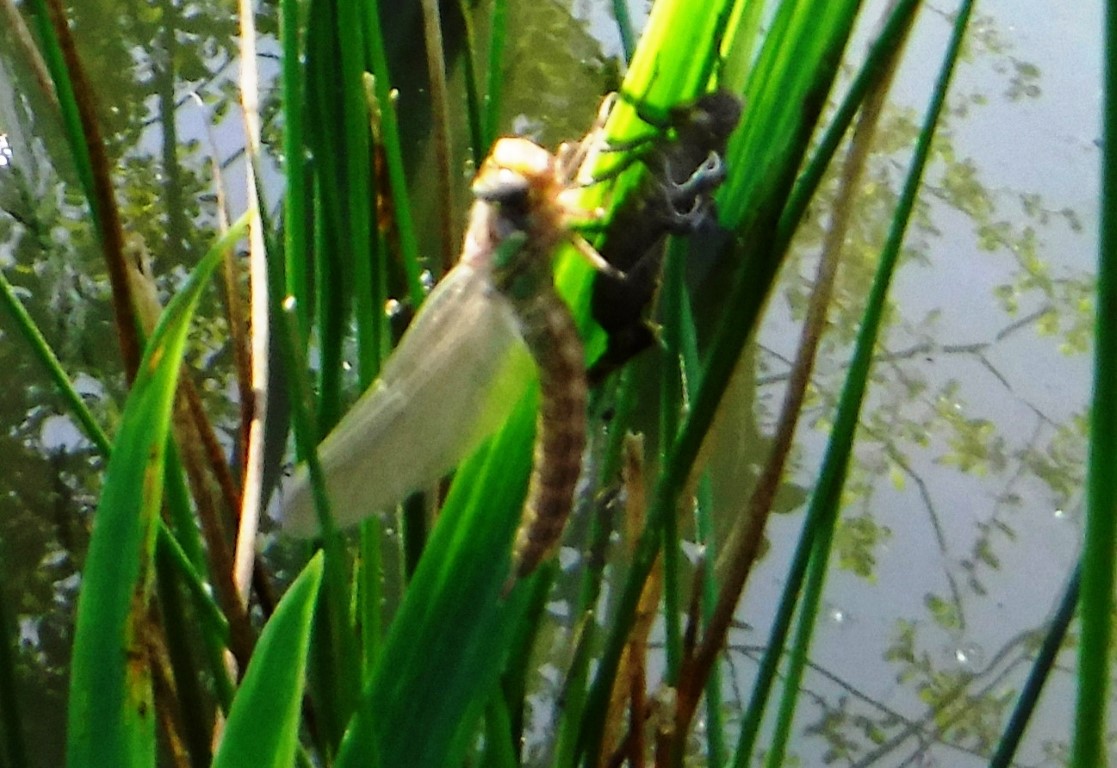
Total monthly rainfall: was 87.5 millimetres with a maximum day rainfall of 24mm on May 30th. Rain fell on only 8 days of the month, with only one day’s rain between the 4th and 23rd. There were twelve days with 100% cloud cover for part of the day. The maximum daytime temperature on the warmest day was 27° C (27th May), while on the coldest it was 12° C (1st and 2nd).
-
 Green hairstreak butterfly
Green hairstreak butterfly
Green hairstreak butterfly
Green hairstreak butterfly
-
 Red twin spot carpet moth
Red twin spot carpet moth
Red twin spot carpet moth
Red twin spot carpet moth
-
 Hairy dragonfly with exuvia
Hairy dragonfly with exuvia
Hairy dragonfly with exuvia
Hairy dragonfly with exuvia
-
 White bugle
White bugle
White bugle
White bugle
-
 Mother shipton moth
Mother shipton moth
Mother shipton moth
Mother shipton moth
https://www.kentfieldclub.org.uk/news/little-barton-farm-wildlife-notes/may-2018#sigProId592fdc851e
Because of the earlier slow progress through spring, there was a lot of catching-up to do, particularly with pollinating insects A ground-frost overnight into the 1st set back our potato crop and reduced our apple crop (including crab-apples) for the coming summer, but despite this, bugle soon bloomed on the 3rd. After a brief gap, oxeye daisy, meadow buttercup, and white bugle flowered on the 9th, followed by creeping buttercup and yellow water-lily on the 10th. This was soon followed by bird’s-foot trefoil (12th), yellow iris (13th), red clover and red campion (14th), common vetch (16th), and sheep sorrel (18th). Finally, scarlet pimpernel bloomed on the 23rd, while pineapple weed and white water-lily bloomed on the 27th with marsh bedstraw and bluewater speedwell to complete the month on the 31st. The 17 wildflower species to bloom this month bring our total for the year so far to 40. Trees and shrubs to flower this month are horse-chestnut on the 1st, elder (17th), holly(19th), and dog rose (25th).
Six new butterfly species this month increased our tally to 13 for the year so far. On the 4th, a large- white butterfly appeared among crab-apple trees in our woodland ride, while on the 8th we spotted our first brimstone in the garden near an alder buckthorn. Purely by chance, as we were getting the car out on May 20th, Susan caught a glimpse of a small green butterfly sunning itself on a Ceanaothus. This proved to be the elusive green hairstreak, which we see very infrequently – the last being 4th May 2011. A very late small tortoiseshell flew slowly along the woodland edge on the 26th, before a pristine common blue emerged in our flower meadow on the 28th, and our first immigrant painted lady arrived on the 31st.
More moth-related species appeared this month than during the previous four months put together.
We began on the 1st May with a brindled pug moth on the outside of a lighted window, followed on 5th May by a bee-moth on the brickwork of a lighted porch, and a green-oak tortrix caterpillar dangling from a woodland hornbeam. A muslin moth settled on the doormat of the lighted porch on the 10th, then, after a delay, we spotted two lackey moth caterpillars on waterside soft rush, before small china-mark moths began appearing among marginal rushes at a woodland pond on the 21st; about 50 longhorn moths, Nemophera degeerella “danced” around hazel bushes, and a red twin-spot carpet moth tried to hide in a white Spiraea shrub in the garden. Two days later, the first burnet companion appeared among the field-grasses, and at the back-woodland pond we found the green caterpillar of a bright-line brown-eye moth (identified for us by the Kent Moth Group) on the trunk of a goat-willow tree. May 25th produced a Mother Shipton moth in the vegetable garden, followed on the 26th by a cinnarbar moth among field-grasses and the first of many silver Y moths among waterside rushes. Our tally ended with a yellow shell moth on the 27th, and the grass moth Chrysoteuchia culmella on the 30th.
The first two downy emerald dragonflies emerged on May 1st, before the large red damselfly on the 5th, and the white-legged damselfly on the 6th. Three more species appeared on the 7th these being the azure and red-eyed damselflies and the hairy dragonfly the latter complete with its larval skin (exuvia). The 9th produced the first two of a succession of four-spotted chasers, with the broad-bodied chaser following on the 15th. The black-tailed skimmer on the 23rd and the emperor dragonfly on the 27th brought our year’s total so far to 11 species.
Other insect species to appear were the white-tailed bumblebee in the garden on the 1st, while on the 3rd we saw about 50 of last month’s St Mark’s flies committing suicide by drowning themselves in the front woodland pond. A somewhat infrequent spotted crane-fly visited the pond margins on the 8th, and a scorpion fly settled by the back woodland pond on the 10th. The 13th saw a triple-tailed mayfly among soft rush in the lakeside margins.
We saw no new migrating wild birds this month, so sadly the collared dove failed to arrive here this year.
